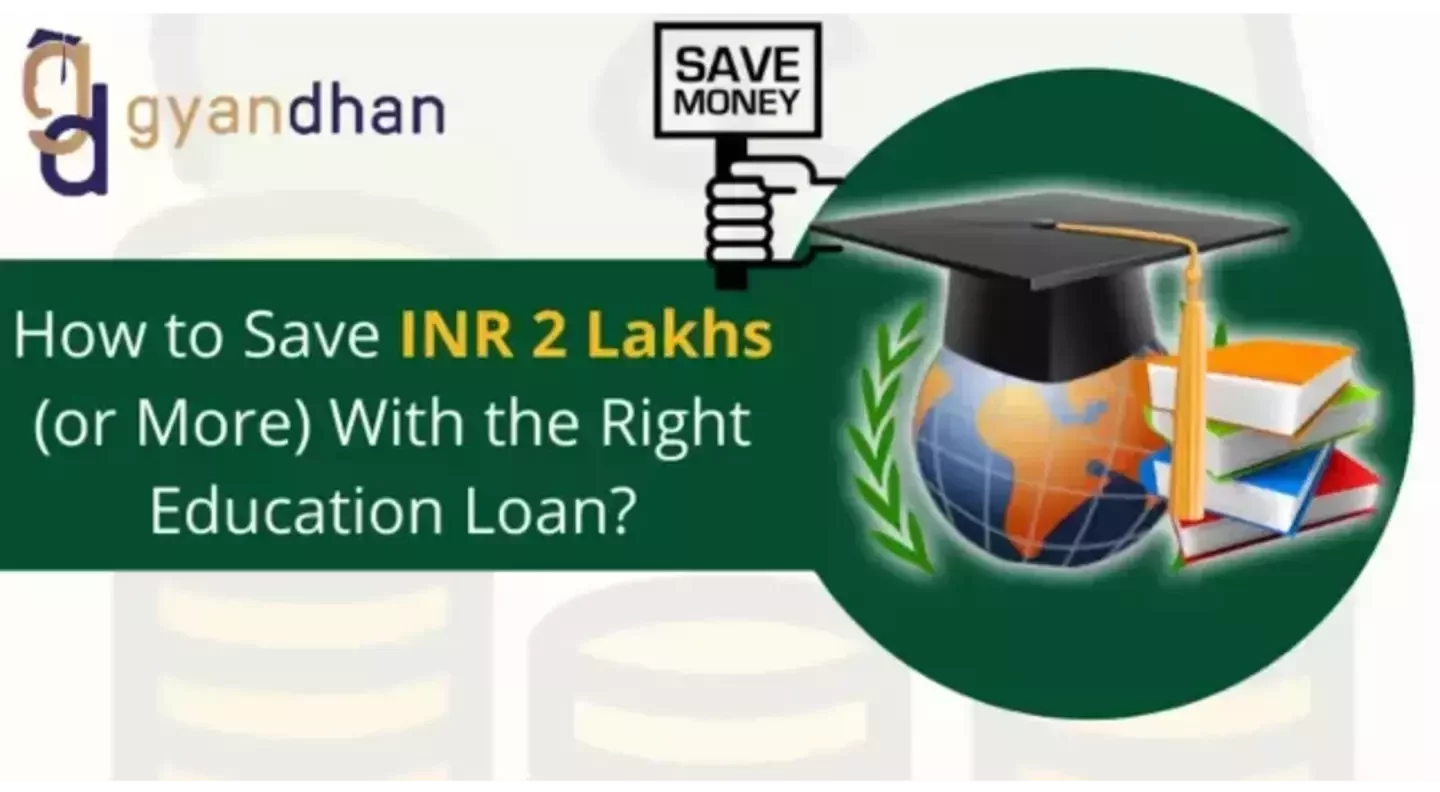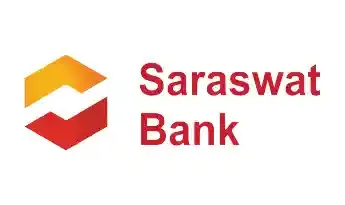Get instant loan offer suitable to your profile !


On this Page:
Discover practical tips to save up to 2 lakh INR on your abroad education loan. Learn strategies for interest rate reduction, repayment planning, and more with expert insights
What if we told you that the rate of interest on an education loan might change post-sanction, would you be surprised? 8 out of 10 loan applicants would say an unequivocal yes. Few, if any, are aware of the complex formula that defines the interest rate of a student loan. Most Indian bank and NBFC loans come with a floating interest rate.
What’s a Floating Rate? Keep reading to understand the meaning of floating interest rates and they can significantly impact the total savings of an applicant.

For something as complicated as a study abroad student loan, several determinants can help you save up to INR 2 Lakh (or even more). But, the boss of them all is the rate of interest. Why? Because it ranges from as low as 8.85% to as high as 16%, depending upon facets like the type of lender, education loan type, etc.
| Type of Lender | Top Lenders |
|---|---|
|
SBI, BOB. UBI |
|
|
Axis Bank, ICICI Bank, IDFC First Bank |
|
|
Auxilo, Avanse, InCred, HDFC Credila |
|
|
MPower, Prodigy Finance |
To understand how interest rates determine your savings, let’s compare student loan interest rates. Keeping the loan amount INR 40 Lakhs, and the repayment period of 10 years, we use GyanDhan’s EMI calculator to calculate the total interest for varying ROI.
| Assumed ROI | Total Interest Paid (in INR) | Total Payment (Principal + Interest) (in INR) |
|---|---|---|
|
9% |
30,38,107 |
70,38,107 |
|
9.25% |
31,40,383 |
71,40,383 |
|
9.50% |
32,43,677 |
72,43,677 |
|
10% |
34,53,304 |
74,53,304 |
The table unequivocally proves that even a minuscule jump of 0.25% in interest rate unfavorably impacts the applicant. A whole 1% difference indicates you can end up paying an additional INR 4 Lakhs while repaying the study loan. This is why GyanDhan always recommends the lowest-rate education loan options to applicants after a precise evaluation of their profile. We also highly recommend fixed-rate loans. Since the ROI doesn’t fluctuate over the loan tenure, you dive into the loan with eyes wide open, knowing the exact, unaltered amount to be paid.

Many education loans subsidies launched by the Government of India such as Dr Ambedkar Central Sector Scheme provide full interest waivers during the moratorium period to EBC and OBC citizens.
| Education Loan Subsidy | Description |
|---|---|
|
Dr. Ambedkar Central Sector Scheme |
Applicants must belong to OBC (income ≤ INR 8 Lakh/year) or EBC (income ≤ INR 5 Lakh/year). |
|
Central Sector Interest Subsidy (CSIS) |
Applicant’s total family income ≤ INR 4.50 Lakh/year. |
|
Interest Subsidy Scheme on Education Loan by the Government of Gujarat |
Applicant’s total family income ≤ INR 6 Lakh/year. |

An easy way to economize an education loan is to pick a domestic lender. Even when a USD loan is offering a lower interest rate, an INR loan turns out to be a prudent choice in the long run. The primary logic for it is the steadily depreciating value of Indian currency when compared to US dollars.
Let’s assume you had two education loan options in 2014 where 1 USD was USD = INR 60 approximately.
| Loan Amount | Interest Rate |
|---|---|
|
INR 30 Lakh |
11% |
|
USD 50,000 |
9% |
You picked the international lender because the interest rate seemed better. Fast-forward to 2017 when you have to repay the loan, i.e. the entire USD 50,000 ( 32 Lakh in 2017 as 1 USD rose from INR 61.80 to INR 64.50 in 3 years) plus interest. A loss of over INR 2 Lakh straight away. But, what if you had chosen the domestic loan? In that case, you’d just have to repay INR 30L (equivalent to USD 47,620 in 2017) because the conversion rate has made INR weaker since 2014! Shorn of verbiage, a domestic lender saves you a considerable amount of money.

Most lenders levy a processing fee on an education loan. It can vary from 0% to 5%. Although the amount may not seem high, every drop in the ocean counts. So, opt for a loan that doesn’t charge you through the nose on processing fees.
| Lender | Processing Fee |
|---|---|
|
Up to INR 15,000 + GST |
|
|
Up to 1% of the sanctioned loan amount |
|
|
Up to 2% of the sanctioned loan amount |
|
|
Up to 5% of the sanctioned loan amount |

As per Chapter VI-A of Section 80E, education loan borrowers can claim deductions, albeit only on interest and not on the principal loan amount. It means you don’t have to pay any tax on the interest payments. Features of tax benefits under section 80E are as follows -




When taking an education loan, your biggest concern should be a low-interest rate option (preferably, a fixed interest rate). We’ve revealed how it minimizes the financial impact. But, factors like tax benefits help reduce the burden further because, over the tenure of the loan, the tax claims transform into sizeable savings.
Take, for instance, an INR 20 Lakhs student loan to be repaid over 5 years. The interest rate is 11.5%. Roughly, each year the interest paid will be around INR 2.3 Lakhs. If the parent, spouse, or applicant comes within the top shelf of the tax slab i.e. 30%, then they can save as much as INR 70,000 annually in taxes, which can sum up to INR 3.5L over the loan tenure!
This tax subsidy on education loans applies only to a few financial institutions (all banks). Most NBFCs are not covered within Section 80E. It means taking a loan from a non-banking lender can turn heavier on your pocket.
Watch on How to Secure an Education Loan Without Collateral or a Co-Applicant

An insurance cover safeguards the family of the borrower from the liabilities of the education loan. In case of a fatal eventuality, the co-applicant is not liable to repay the loan. The insurance pays off the entire amount. Technically, an insurance cover is a win-win situation because it indemnifies the risk to the bank and the applicant’s family. Moreover, the premium for the insurance, which varies as per lender, is paid from the loan itself. The applicant doesn’t need to pay it upfront. Students need to be aware of the unnecessary insurance that some lenders try to sell with education loans. If you have even a small doubt, you can always confirm it with GyanDhan’s education loan counselors.

Every student who hopes to study abroad has different needs. From the college they pick to the country they select; dozens of little things add together to define loan requirements. GyanDhan’s focus is to find the most suitable and cost-effective study loan with maximum savings for the student based on his/her specific requirements and to do so in the shortest period. Remember, an education loan that fits one applicant may not be such a great option for another.
A fixed interest rate, a low processing fee, tax benefits, and all the other facets explained above influence how much you can save on an education loan. But, these are concrete, analytical factors. Other, more abstract elements can help you save even more.
A simple example is planning your education loan repayment well in advance using our EMI calculator. When you are aware of how much money you have to shell out each month, you prepare for it by making sensible lifestyle choices. By that we mean, that instead of splurging away your part-time work earnings while studying, you save it to repay the loan. Every penny saved now is a buck paid in the future. Still, a little lost? We, at GyanDhan, can help you compare different options of the best education loans for students who wish to go abroad for higher studies. Let our loan counselors take away the uncertainty of the process by minutely evaluating your profile and helping you search for the most cost-effective loan option that guarantees maximum savings in the future.

To lower your school loan interest rate, keep a solid credit score, give collateral or a co-applicant with good credit, and look into balance transfer opportunities. IDFC FIRST Bank, for example, offers lower interest rates and more flexible terms on transferred loans.
A balance transfer allows you to move your debt to a lender with better terms, such as reduced interest rates and more flexible repayment options. For example, IDFC FIRST Bank offers college loan transfers with up to 1% lower interest rates and additional incentives.
The Indian government provides education help through the Vidya Lakshmi portal, which offers loans and scholarships, and the CSIS Scheme, which subsidizes interest for families earning up to INR 4.5 Lakh per year.
Prepaying or partially paying your loan reduces the principal, lowers the total interest, and shortens the loan term, allowing for speedier debt repayment.
Section 80E of the Income Tax Act allows you to deduct the interest paid on education loans from your taxable income for up to 8 years, or until the loan is entirely returned, lowering your tax burden.
Adding a co-applicant or providing collateral can reduce interest rates by lowering the lender's risk while also improving loan eligibility, thereby increasing approval chances and loan amounts. For example, securing an unsecured loan with collateral often results in lower interest rates.
Check Your Education Loan Eligibility

Ask from a community of 10K+ peers, alumni and experts
Trending Blogs
Similar Blogs

Network with a community of curious students, just like you
Join our community to make connections, find answers and future roommates.. Join our CommunityCountry-Wise Loans
Best Lenders for Education Loan

ICICI Bank

Axis Bank

Union Bank

Prodigy

Auxilo

Credila

IDFC

InCred

MPower

Avanse

SBI

BOB

Poonawalla

Saraswat